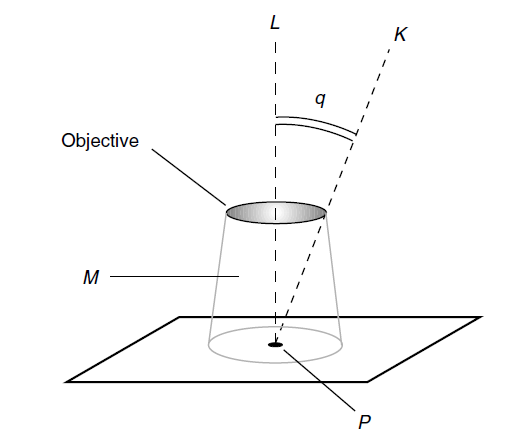
تاريخ الفيزياء

علماء الفيزياء


الفيزياء الكلاسيكية

الميكانيك

الديناميكا الحرارية


الكهربائية والمغناطيسية

الكهربائية

المغناطيسية

الكهرومغناطيسية


علم البصريات

تاريخ علم البصريات

الضوء

مواضيع عامة في علم البصريات

الصوت


الفيزياء الحديثة


النظرية النسبية

النظرية النسبية الخاصة

النظرية النسبية العامة

مواضيع عامة في النظرية النسبية

ميكانيكا الكم

الفيزياء الذرية

الفيزياء الجزيئية


الفيزياء النووية

مواضيع عامة في الفيزياء النووية

النشاط الاشعاعي


فيزياء الحالة الصلبة

الموصلات

أشباه الموصلات

العوازل

مواضيع عامة في الفيزياء الصلبة

فيزياء الجوامد


الليزر

أنواع الليزر

بعض تطبيقات الليزر

مواضيع عامة في الليزر


علم الفلك

تاريخ وعلماء علم الفلك

الثقوب السوداء


المجموعة الشمسية

الشمس

كوكب عطارد

كوكب الزهرة

كوكب الأرض

كوكب المريخ

كوكب المشتري

كوكب زحل

كوكب أورانوس

كوكب نبتون

كوكب بلوتو

القمر

كواكب ومواضيع اخرى

مواضيع عامة في علم الفلك

النجوم

البلازما

الألكترونيات

خواص المادة


الطاقة البديلة

الطاقة الشمسية

مواضيع عامة في الطاقة البديلة

المد والجزر

فيزياء الجسيمات


الفيزياء والعلوم الأخرى

الفيزياء الكيميائية

الفيزياء الرياضية

الفيزياء الحيوية

الفيزياء العامة


مواضيع عامة في الفيزياء

تجارب فيزيائية

مصطلحات وتعاريف فيزيائية

وحدات القياس الفيزيائية

طرائف الفيزياء

مواضيع اخرى
NUMERICAL APERTURE AND RESOLUTION
المؤلف:
S. Gibilisco
المصدر:
Physics Demystified
الجزء والصفحة:
524
11-11-2020
2425
NUMERICAL APERTURE AND RESOLUTION
In an optical microscope, the numerical aperture of the objective is an important specification in determining the resolution, or the amount of detail the microscope can render. This is defined as shown in Fig. 1.

Fig. 1. Determination of the numerical aperture for a microscope objective. See text for details.
Let L be a line passing through a point P in the specimen to be examined, as well as through the center of the objective. Let K be a line passing through P and intersecting the outer edge of the objective lens opening. (It is assumed that this outer edge is circular.) Let q be the measure of the angle between lines L and K. Let M be the medium between the objective and the sample under examination. This medium M is usually air, but not always. Let rm be the refractive index of M. Then the numerical aperture of the objective Ao is given by
Ao = rm sin q
In general, the greater the value of Ao, the better is the resolution. There are three ways to increase the Ao of a microscope objective of a given focal length:
• The diameter of the objective can be increased.
• The value of rm can be increased.
• The wavelength of the illuminating light can be decreased.
Large-diameter objectives having short focal lengths, thereby providing high magnification, are difficult to construct. Thus, when scientists want to examine an object in high detail, they can use blue light, which has a relatively short wavelength. Alternatively, or in addition, the medium M between the objective and the specimen can be changed to something with a high index of refraction, such as clear oil. This shortens the wavelength of the illuminating beam that strikes the objective because it slows down the speed of light in M. (Remember the relation between the speed of an electromagnetic disturbance, the wavelength, and the frequency!) A side effect of this tactic is a reduction in the effective magnification of the objective lens, but this can be compensated for by using an objective with a smaller radius of surface curvature or by increasing the distance between the objective and the eyepiece.
The use of monochromatic light rather than white light offers another advantage. Chromatic aberration affects the light passing through a microscope in the same way that it affects the light passing through a telescope. If the light has only one wavelength, chromatic aberration does not occur. In addition, the use of various colors of monochromatic light (red, orange, yellow, green, or blue) can accentuate structural or anatomic features in a specimen that do not always show up well in white light.
 الاكثر قراءة في مواضيع عامة في علم البصريات
الاكثر قراءة في مواضيع عامة في علم البصريات
 اخر الاخبار
اخر الاخبار
اخبار العتبة العباسية المقدسة

الآخبار الصحية















 قسم الشؤون الفكرية يصدر كتاباً يوثق تاريخ السدانة في العتبة العباسية المقدسة
قسم الشؤون الفكرية يصدر كتاباً يوثق تاريخ السدانة في العتبة العباسية المقدسة "المهمة".. إصدار قصصي يوثّق القصص الفائزة في مسابقة فتوى الدفاع المقدسة للقصة القصيرة
"المهمة".. إصدار قصصي يوثّق القصص الفائزة في مسابقة فتوى الدفاع المقدسة للقصة القصيرة (نوافذ).. إصدار أدبي يوثق القصص الفائزة في مسابقة الإمام العسكري (عليه السلام)
(نوافذ).. إصدار أدبي يوثق القصص الفائزة في مسابقة الإمام العسكري (عليه السلام)


















